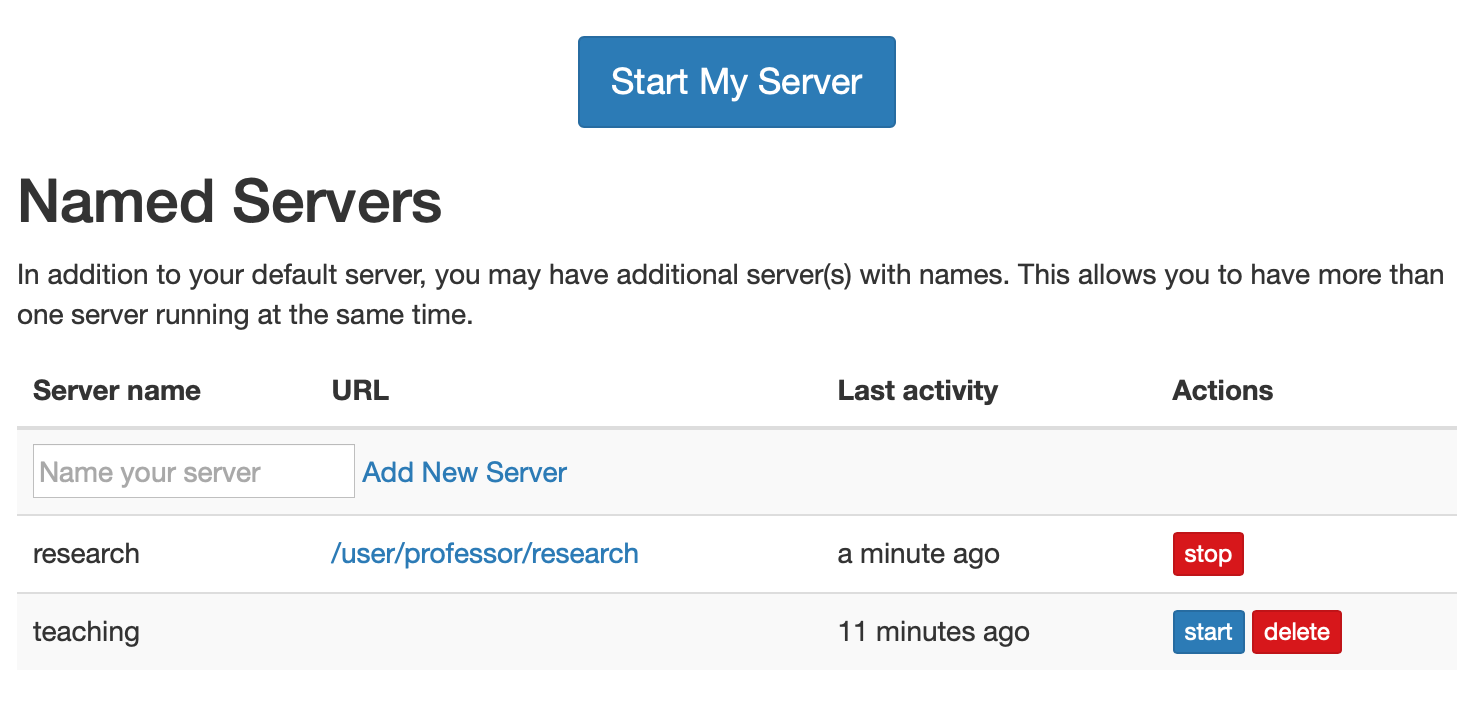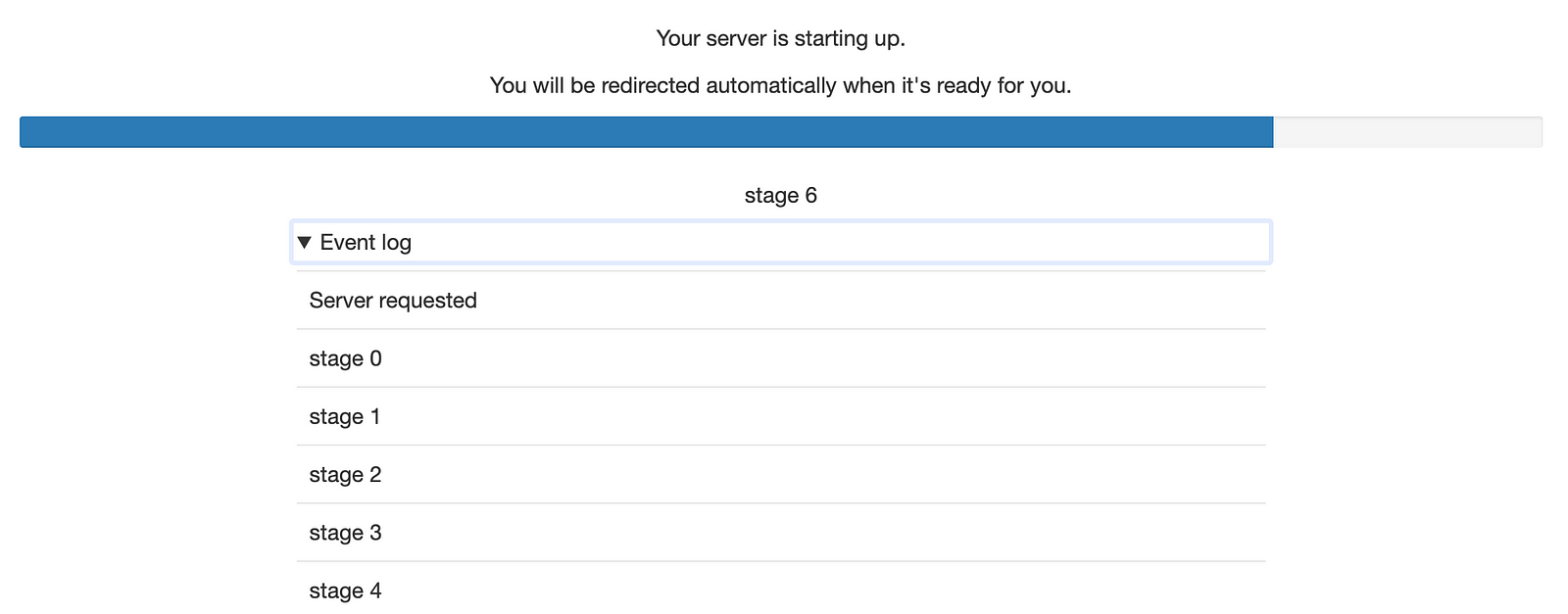May 3
Today, we are pleased to announce the 1.0 release of JupyterHub. We’ve come a long way since our first release in March, 2015. There are loads of new features and improvements covered in the changelog, but we’ll cover a few of the highlights here.
You can upgrade jupyterhub with conda or pip:
(Before upgrading, always make sure to backup your database!)
conda install -c conda-forge jupyterhub==1.0.*
pip install --upgrade jupyterhub==1.0.*
UI for named servers
Named servers are a concept in JupyterHub that allows each user to have more than one server (e.g. a ‘gpu’ server with access to gpus, or a ‘cs284’ server with the necessary resources for a given class). JupyterHub 1.0 introduces UI for managing these servers, so users can create/start/stop/delete their servers from the hub home page:

Improved pending spawn handling and less implicit spawn behavior
When users launch their server, they will be faced with a progress bar showing the progress. Spawners can emit custom messages to indicate the stages of launch, which are especially useful when it can take a while.

Support for total internal encryption with SSL
If your JupyterHub is publicly accessible, we hope you are using HTTPS (it’s never been easier, thanks to letsencrypt)! However, JupyterHub exclusively used HTTP for internal communication. This is usually fine, especially for single-machines, but for deployments on distributed or shared infrastructure it’s a good idea to encrypt communication between your components. With 1.0, you can enable SSL encryption and authentication of all internal communication as well. Spawners must support this feature by defining Spawner.move_certs. Currently, local spawners and DockerSpawner support internal ssl.
Support for checking and refreshing authentication
JupyterHub authentication is most often managed by an external authority, e.g. GitHub OAuth. Auth state can be used to persist credentials, such as enabling push access to repositories or access to resources. These credentials can sometimes expire or need refreshing. Until now, expiring or refreshing authentication was not well supported by JupyterHub. 1.0 introduces new configuration to refresh or expire authentication info:
c.Authenticator.auth_refresh_age allows authentication to expire after a number of seconds.
c.Authenticator.refresh_pre_spawn forces a refresh of authentication prior to spawning a server, effectively requiring a user to have up-to-date authentication when they start their server, which can be important when the user environment should have credentials with access to external resources.
Authenticator.refresh_auth defines what it means to refresh authentication (default is nothing, but can check with external authorities to re-load info such as tokens or group membership) and can be customized by Authenticator implementations.
Thanks!
Huge thanks to the many people who have contributed to this release, whether it was through discussion, testing, documentation, or development.
